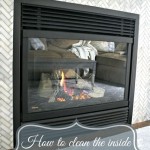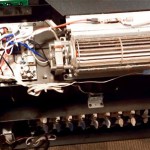```html
Gas Fireplace vs. Wood Burning Stove: A Comparative Analysis
Heating a home efficiently and aesthetically is a primary concern for many homeowners. Two popular choices for supplemental or primary heating are gas fireplaces and wood-burning stoves. Both offer warmth and a focal point within a room, but they differ significantly in their operation, efficiency, environmental impact, and maintenance requirements. Understanding these differences is crucial for making an informed decision that aligns with individual needs and preferences.
Gas fireplaces, often fueled by natural gas or propane, provide a convenient and relatively clean-burning source of heat. They typically offer instant ignition with adjustable flame height and heat output, frequently controlled by a remote or thermostat. Wood-burning stoves, on the other hand, burn wood as fuel, requiring manual loading and tending of the fire. They offer a traditional aesthetic and a different type of radiant heat that many find appealing. The following sections will explore the key aspects of each option to facilitate a comprehensive comparison.
Fuel and Operational Considerations
The fuel source is a fundamental difference between gas fireplaces and wood-burning stoves. Gas fireplaces utilize natural gas or propane, which are readily available in many areas through existing utility lines or propane tanks. This accessibility simplifies the fueling process, as there is no need to physically acquire, store, and transport fuel. The operation is remarkably simple: with a push of a button or flick of a switch, the fireplace ignites and begins producing heat. The flame height and heat output can be easily adjusted to maintain a comfortable room temperature. Shutting down the fireplace is equally straightforward.
Wood-burning stoves, conversely, require a constant supply of firewood. Sourcing firewood can involve purchasing it from a supplier, harvesting it yourself (if permitted and feasible), or a combination of both. Storing firewood requires adequate space and protection from the elements to prevent rot and insect infestation. Operating a wood-burning stove is a manual process. It involves loading the stove with wood, lighting the fire, and controlling the airflow to regulate the burn rate and heat output. This requires more active involvement and monitoring compared to a gas fireplace. Additionally, ash removal is a regular chore associated with wood-burning stoves.
The type of wood used also significantly impacts the performance of a wood-burning stove. Hardwoods, such as oak and maple, burn longer and produce more heat than softwoods, such as pine and fir. However, hardwoods can be more difficult to ignite. Kiln-dried wood is preferable as it has a lower moisture content, resulting in a cleaner and more efficient burn. Burning wet or green wood can produce excessive smoke and creosote buildup, increasing the risk of chimney fires.
Regarding operational safety, both gas fireplaces and wood-burning stoves require proper installation and maintenance. Gas fireplaces must be installed by a qualified technician to ensure proper venting and prevent gas leaks. Wood-burning stoves require careful installation to meet clearances from combustible materials and a properly functioning chimney to vent smoke safely. Regular chimney inspections and cleaning are essential to prevent creosote buildup and the risk of chimney fires.
Efficiency and Environmental Impact
The efficiency of a heating appliance refers to the percentage of fuel energy that is converted into usable heat. Gas fireplaces typically have efficiency ratings ranging from 60% to 80%, depending on the model and venting system. Direct-vent gas fireplaces, which draw combustion air from outside and vent exhaust directly outside, generally offer higher efficiency than vent-free models.
The efficiency of wood-burning stoves varies considerably depending on the model, the type of wood burned, and the operating practices. Older, non-EPA-certified stoves can have efficiency ratings as low as 40%, while modern EPA-certified stoves can achieve efficiency ratings of 70% or higher. EPA-certified stoves are designed to burn wood more completely, reducing emissions and improving efficiency.
The environmental impact of both gas fireplaces and wood-burning stoves is a significant concern. Gas fireplaces produce greenhouse gas emissions when burning natural gas or propane, contributing to climate change. However, they generally produce fewer particulate matter emissions than wood-burning stoves. Particulate matter, a component of smoke, can cause respiratory problems and contribute to air pollution.
Wood-burning stoves can release significant amounts of particulate matter, carbon monoxide, and other air pollutants. The amount of emissions depends on the type of stove, the type of wood burned, and the burning practices. Modern EPA-certified stoves produce significantly fewer emissions than older models. Burning dry, seasoned wood and employing proper burning techniques, such as top-down burning, can also reduce emissions.
The sustainability of wood as a fuel source is another consideration. If firewood is harvested responsibly from sustainably managed forests, it can be considered a renewable resource. However, deforestation and unsustainable logging practices can have negative environmental consequences. Additionally, the transportation of firewood can contribute to carbon emissions.
Life cycle assessments, which consider the environmental impact of an appliance from production to disposal, provide a more comprehensive understanding of the environmental footprint. However, such assessments are complex and can vary depending on the assumptions made.
Cost Analysis and Maintenance Requirements
The initial cost of a gas fireplace or wood-burning stove can vary depending on the model, features, and installation requirements. Gas fireplaces typically require professional installation, including gas line connections and venting modifications. Wood-burning stoves also require professional installation to ensure proper clearances and chimney connections. The cost of installation can significantly impact the overall investment.
Fuel costs are an ongoing expense associated with both heating options. The price of natural gas and propane fluctuates depending on market conditions and geographic location. The cost of firewood varies depending on the region, the type of wood, and the quantity purchased. Comparing the cost per BTU (British thermal unit) of heat produced by each fuel source is a useful way to evaluate the relative fuel costs.
Maintenance requirements also differ significantly. Gas fireplaces require annual inspections by a qualified technician to check for gas leaks, proper venting, and burner performance. Cleaning the glass and decorative logs is also necessary to maintain the aesthetic appeal. Wood-burning stoves require regular chimney inspections and cleaning to prevent creosote buildup and the risk of chimney fires. Ash removal is a frequent task, and the stove itself may require occasional maintenance to ensure proper operation.
Repair costs can also arise for both types of appliances. Gas fireplaces may require repairs to gas valves, igniters, or venting systems. Wood-burning stoves may require repairs to doors, gaskets, or firebricks. The availability of replacement parts and the cost of labor can influence the overall cost of ownership.
Beyond the direct costs, consider the time investment required for each option. Gas fireplaces offer convenience and minimal maintenance, while wood-burning stoves demand more active involvement in fuel acquisition, fire tending, and maintenance. This time commitment should be factored into the decision-making process.
```
Freestanding Gas Burning Stoves Sierra Hearth And Home

Can You Convert A Gas Fireplace To Wood Burning Stove Direct Stoves

Converting A Fireplace To Wood Burning Stove Chesneys

Gazco Chesterfield 5 Gas Stove

Gas Logs Vs Wood Burning Fireplaces Dc Area Fireplace Service

Can You Install A Wood Stove In Fireplace Direct Stoves

Can A Wood Burning Fireplace Be Converted To Gas The Flame Company

Gas Vs Wood Fireplaces A Guide Chimney Com

Gazco Chesterfield 5 Gas Stove

Stoves Wood Gas And Pellet Sierra Hearth Home
Related Posts








